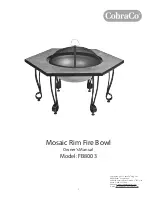
3
Transport and assembly
instructions
3.1
Transport and handling instructions
b
Caution!
Collectors may be damaged by incorrect
storage!
If the flat collector is not stored correctly,
moisture can penetrate and cause damage in
the presence of frost.
>
Always store the flat collectors in a dry
place and protected from the elements.
>
Always transport the flat collector lying flat to ensure
optimum protection.
>
The load can be transported to the roof more easily
using a construction site crane or automatic crane. If
this equipment is not available, an inclined hoist can
be used. In either case, it is essential to guide the flat
collector with additional ropes to prevent swinging or
tilting to the side.
>
If motorised equipment is not available, pull the flat
collector on to the roof by sliding them up lean-to lad-
ders or scaffolding boards.
3.2 Installation
instructions
>
Observe the maximum permissible substructure load-
ing and the required distance from the roof edge in
accordance with EN 1991.
>
Attach the flat collectors carefully to ensure that the
brackets can safely withstand the tensile loading that
occurs during storms and adverse weather conditions.
>
Align the flat collectors to point south if possible.
>
Remove the sun protection film on the flat collectors
only after the solar energy system has been started
up.
>
For work on the solar circuit, use only hard soldered
joints, gaskets and compression fittings or press fit-
tings that have been approved by the manufacturer
for use in solar circuits and at correspondingly high
temperatures.
>
Thermally insulate the pipes in accordance with the
Heating Systems Ordinance (HeizAnlV), making sure
that the thermal insulation is temperature resistant
(175 °C) and UV resistant.
>
Fill the solar system only with Vaillant ready-mixed
solar fluid.
3.3 Technical
Guidance
The system must be installed in accordance with all rele-
vant and applicable national regulations, and must be
installed to suit site conditions.
Observe all national regulations, including:
– Working at Heights Regulations 2005
– Health and Safety at Work Act 1974
– Electricity at Work Regulations 1989
– IEE Wiring Regulations BS 7671
– Lightning protection requirements
– Equipotential bonding of electrical installations.
3.4 Related
documents
The installation of the solar system must be in accord-
ance with the relevant requirements of Health and
Safety Document No. 635 (The Electricity at Work Regu-
lations 1989), BS7671 (IEE Wiring Regulations) and the
Water Supply (Water Fitting) Regulations 1999, or The
Water Bylaws 2000 (Scotland). It should also be in
accordance with the relevant requirements of the Local
Authority, Building Regulations, The Building Regulations
(Scotland), The Building Regulations (Northern Ireland)
and the relevant recommendations of the following Brit-
ish Standards:
BS EN 806:
Specification for installations inside build-
ings conveying water for human consumption.
BS 6700:
Services supplying water for domestic use
within buildings and their curtilages.
BS 5449:
Forced circulation hot water central heating
systems for domestic premises. Note: only up to 45 kW.
BS 6880:
Low temperature hot water heating systems
of output greater than 45 kW.
Part 1 Fundamental and design considerations.
Part 2 Selection of equipment.
Part 3 Installation, commissioning and maintenance.
BS 6114:
Expansion vessels using an internal diaphragm
for unvented hot water supply systems.
BS 4814:
Specification for: Expansion vessels using an
internal diaphragm, for sealed hot water heating sys-
tems.
Unvented hot water systems must comply with building
regulation G section 3.
Installation manual auroTHERM 0020100606_02
6
3 Transport and assembly instructions
Summary of Contents for auroTHERM VFK 145/2 H
Page 43: ......







































